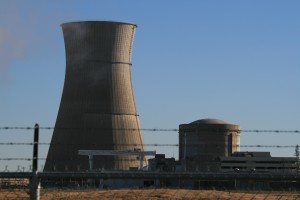The competing omnibus federal climate change bills both offer taxpayer subsidies for coal and nuclear power. Coal fuels 50% of electricity generation in the U.S. (70% in China) and makes the U.S. carbon footprint among the largest in the world. And while California has a de facto ban on new nuclear power plants until a federal repository is established for radioactive waste, that has not stopped longshot investors from proposing a new nuclear reactor near Fresno.
In 2009, thanks in part to a campaign launched by the Sierra Club and the Western Clean Energy Campaign, not one new coal plant was built in the U.S, while 26 planned coal facilities were canceled. The financial community is also beginning to view such investments as risky given the looming specter of new carbon regulations that would make coal — now the cheapest of all electricity fuels — more expensive.

Mountain top coal mines are faulted for impact on local ecosystems.
Meanwhile, the Senate’s Kerry-Leiberman-Graham climate change legislation would still earmark taxpayer subsidies for “clean coal” and unverified air pollution strategies such as carbon sequestration.
And while natural gas is cleaner than coal, some grassroots activists are taking issue with the Sierra Club’s support of natural gas as a “bridge” fuel to a more sustainable energy future. It is true methane releases from natural gas drilling operations is a potent greenhouse gas. With better safeguards and additional environmental controls, natural gas can still play a role in responding to the the climate change threat.
On the topic of nuclear power, growing numbers of experts are pointing out that federal investments in new renewable energy capacity and energy efficiency are far better deal for taxpayers and the environment than nuclear power. While growing Stewart Brand, founder of the Bay Area’s Whole Earth Catalog, has jumped on the pro-nuke bandwagon, soft energy path guru Amory Lovins of the Rocky Mountain Institute claim fresh nuclear investments are foolhardy. A recent report by Environment California comes to the same conclusion: nuclear power is too costly, has too many severe negative environmental impacts and is so polarizing, that building sufficient new nuclear capacity to make a dent in our carbon emissions would just take too long.
Even the Wall Street Journal – hardly a bastion of eco-consciousness — notes that among the obstacles to new nuclear power plants in the U.S. is the weak dollar.

Rancho Seco just outside Sacramento, California, the only nuclear facility ever shut down by a public vote.
Last, but not least, Helen Caldicott, the activist who co-founded the anti-nuclear freeze movement in the 1980s, severely criticizes mainstream environmentalists supporting legislation that would steer any new federal subsidies to nuclear power. While some environmental groups are willing to hold their noses and vote for a federal climate bill that includes nuclear in the generation mix, most oppose including new subsidies for nuclear, as well as coal.


